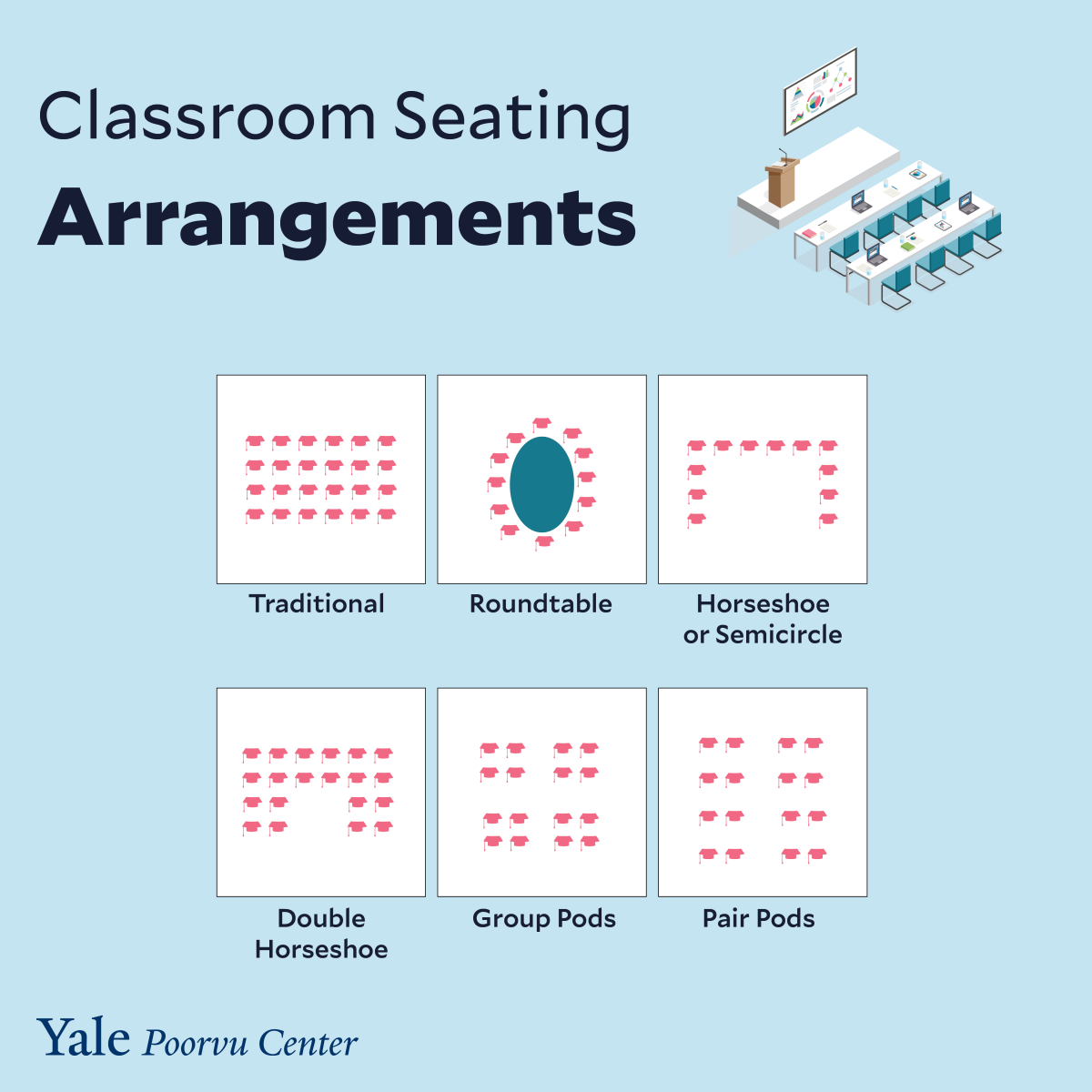Spoiler alert: His answer is, it depends.
In the post, he discusses two seating arrangements: one, is paired rows, with students always having a seating partner, but more or less in columns and rows, and the other is desks grouped into four, all facing each other. He makes the point that by comparison, rows provide less distraction during independent work and a clearer view of the board during direct instruction. And of course, research and common sense supports this.
But the post, while pointing out that other seating arrangements may be more beneficial in situations requiring more collaboration, fails to explore any other options, such as the horseshoe or circle, and research, suggests that "'the most effective way to organise a classroom is to be as flexible as possible with teachers regularly moving furniture to suit the activities' (Maddern, 2011) – for example, Harvey and Kenyon (2013) found that students tend to prefer more flexible seating arrangements.It won't surprise any teacher that research has shown that classroom seating impacts "student learning, motivation, participation, and teacher-student and student-student relationships (Fernandes, Huang & Rinaldo 2011)." What might be more surprising is that recent research suggests that the set-up of the classroom actually impacts the TEACHER and her pedagogical choices as well; according to the Poorvu Center for Teaching and Learning at Yale:
For example, a classroom with seating affixed and directed toward a podium at the front of the room results in instructors spending more time in lecture and students demonstrating less active engagement. In contrast, roundtable seating arrangements lead to instructors and students engaging in more active learning activities, resulting in improved learning outcomes (Brooks 2012).
So what is the answer? It depends. If you are delivering direct instruction, then a clear, unobstructed view of the instructor is best in that moment. However, if you want students to collaborate, seating them with other students is key.
And even with traditional desks, teachers can try to get the best of both worlds. Recent research on elementary seating arrangements supports the horseshoe seating arrangement with flexible seating (i.e. chairs and triangular desks that reconfigure easily). For those with "traditional" desks, the pair square (alternately known as the pair pod) is a style of flexible seating arrangement that gained renewed attention: essentially, students are seated in pairs, but each pair has a pair in front of or behind that they can turn and work with to make a group of four.
What is clear is that if you are thinking of changing up your seating, think about your goals and how your physical space can match your pedagogy. Do you want to create more space for students to Think-Pair-Share? To debate? To collaborate? To create? Then rows might not be the way to go.



No comments:
Post a Comment
Have something to ask or add? Let us know! We have moderation turned on (just in case), but we will be sure to approve new comments each week day.